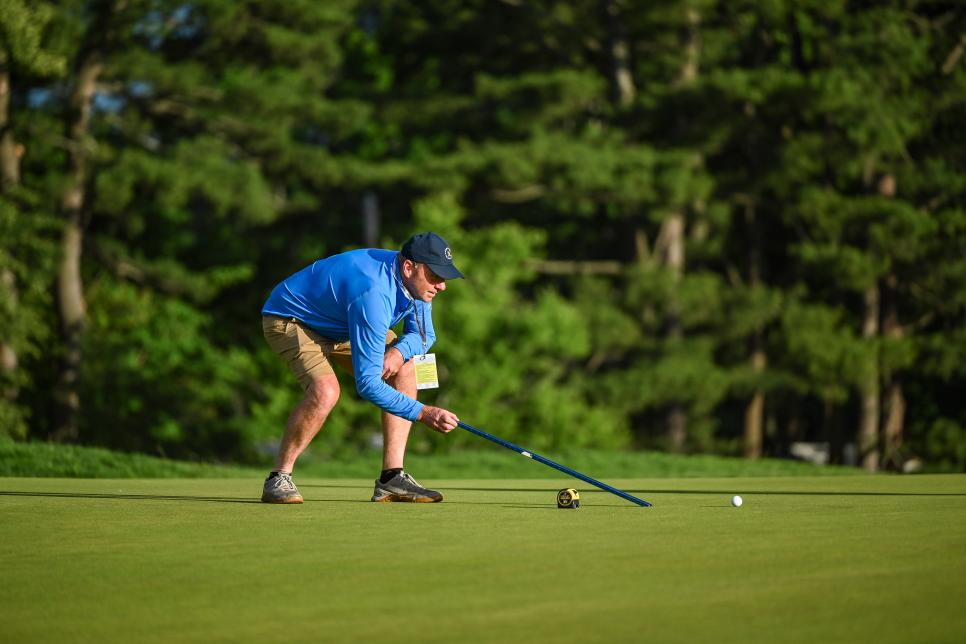Course maintenance
Ask a super: Why are practice greens slower than greens on the course?

Mark Metcalfe
You thought you did the right thing by getting to the course 15 minutes early to hit a few putts. You got your speed dialed in, but then on the first green, you watch your first putt motor by. “These greens are so much faster than the putting green,” is one of the golf’s most common excuses—so common, in fact, that we decided to ask a superintendent if it holds any merit.
To investigate this common complaint, we caught up with Scott Hebert, the director of agronomy at Grass Clippings Rolling Hills, a fully lit night-golf course Tempe, Ariz. Hebert has previously worked at TPC Scottsdale, Quail Hollow Club and Congressional Country Club.
Golf Digest: Golfers can sometimes get frustrated when the practice green and greens on the course are different speeds. Why are practice greens often slower?
Hebert: Ideally, you want to treat every green the same, but sometimes that’s not true. For example, if you are hosting a tournament or are planning to have a lot of players walking across your practice green, you’re not going to have a chance to go back throughout the day to touch it up.
So, that’s why generally speaking, on the practice green you’ll give it a little extra shot of water just to help get it through the day. You know that it’s going to dry out at some point, and it’s going to catch a ton of footprints. That’s why the practice greens may be a touch slower occasionally. They need that extra bit of water to get through the day.
What about on the course, where certain greens are occasionally different speeds than the rest. What’s going on there?
Hebert: Yeah, it’s all about management, knowing your greens, the environment they’re growing in and where they are on property; some are in high, are in low, some get more shade, and irrigation coverage isn’t always consistent from green to green. All of that’s to say, there will be plenty of instances where a green is just faster because it’s in the sun and dries out longer or it gets so much foot traffic on a certain side.

Keyur Khamar
Is there anything that you do differently on those greens to make them the same speed?
Hebert: For sure. Like I said, you want to treat every green the same, but there are exceptions. For example, if everything is rolling at a 12 on the stimpmeter and one green is way slower because of where it is on the course, you might have to double cut and double roll it.
Or if most of your greens are consistent but there’s one outlier that’s faster than all the other ones, you might only single cut it or just roll it. Sometimes you’ll give it a little shot of water to try and fatten up the plant and slow the ball roll down a little bit. You want to try and get all of your greens as consistent as possible.
Is this specialized treatment with specific greens something that golfers can expect at their courses? Or is this reserved for tournaments and top private clubs?
Hebert: Yeah, it depends on your property, what your budget is, what you can get away with doing and how much labor you can justify. You always want them to be consistent for playability purposes, but there’s always going to be a couple inches of variation between greens. You don’t ever want anything more than six inches off, but when it is, you got to know how to make adjustments to correct them.
MORE ASK A SUPER:



